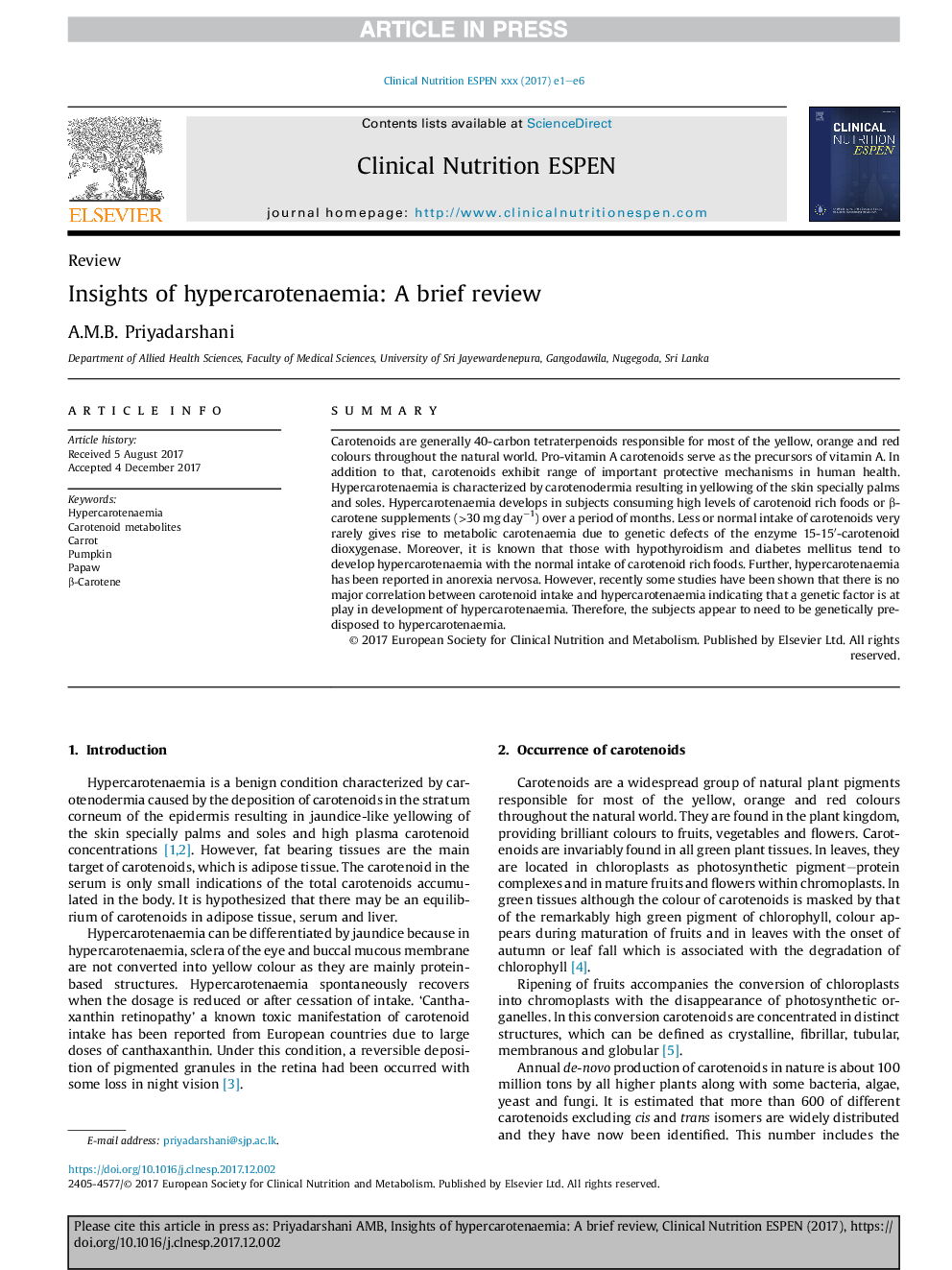| Article ID | Journal | Published Year | Pages | File Type |
|---|---|---|---|---|
| 8587366 | Clinical Nutrition ESPEN | 2018 | 6 Pages |
Abstract
Carotenoids are generally 40-carbon tetraterpenoids responsible for most of the yellow, orange and red colours throughout the natural world. Pro-vitamin A carotenoids serve as the precursors of vitamin A. In addition to that, carotenoids exhibit range of important protective mechanisms in human health. Hypercarotenaemia is characterized by carotenodermia resulting in yellowing of the skin specially palms and soles. Hypercarotenaemia develops in subjects consuming high levels of carotenoid rich foods or β-carotene supplements (>30 mg dayâ1) over a period of months. Less or normal intake of carotenoids very rarely gives rise to metabolic carotenaemia due to genetic defects of the enzyme 15-15â²-carotenoid dioxygenase. Moreover, it is known that those with hypothyroidism and diabetes mellitus tend to develop hypercarotenaemia with the normal intake of carotenoid rich foods. Further, hypercarotenaemia has been reported in anorexia nervosa. However, recently some studies have been shown that there is no major correlation between carotenoid intake and hypercarotenaemia indicating that a genetic factor is at play in development of hypercarotenaemia. Therefore, the subjects appear to need to be genetically pre-disposed to hypercarotenaemia.
Keywords
Related Topics
Health Sciences
Medicine and Dentistry
Critical Care and Intensive Care Medicine
Authors
A.M.B. Priyadarshani,
